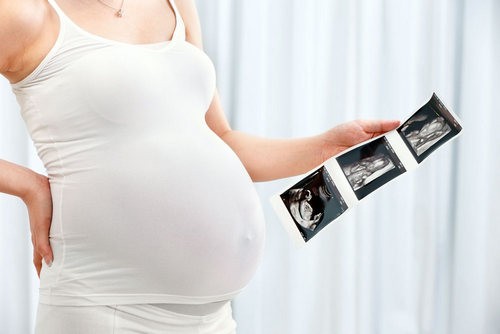In portable pregnancy tests, urine is taken for analysis. In order to determine if hCG is present in the urine, agents with reagents that come in contact with the urine are used.
Pregnancy is a special period in a woman’s life. Someone wholeheartedly wants him to come, someone – not. However, any woman wants to be informed about what is happening with her body. And in this she can help such a useful thing as an express pregnancy test. Unfortunately, not everyone knows how to handle such tests and when to do a pregnancy test to get an accurate result.
They use one interesting physiological feature of a woman’s body – the release during pregnancy of a special hormone – human chorionic gonadotropin (hCG).
Usually the hormone level is close to zero. However, as soon as the egg is fertilized and attaches to the endometrium, this hormone begins to be produced intensively. And every two days, its level in the urine doubles. And the maximum level of the hormone reaches a few weeks after conception, by the end of the first trimester. Thus, a few days after conception, analysis of the level of hCG in the urine or blood allows you to record the fact of pregnancy.
There are several types of tests. First of all, these are strip tests (strips). When using test strips, it is necessary to dip one of them for 10-20 seconds in a jar of urine. Then the strip must be laid on a horizontal surface and wait a while until the stripes appear.
There are also cassette (tablet) tests. In them, the measurement procedure is slightly different from the measurement method for test strips. For testing, it is necessary to collect urine into a pipette and drop it into a special window.

The highest sensitivity and accuracy have jet tests. They are usually available in the form of small plastic boxes equipped with a strip for analysis. You can not dip them into a container with urine, just moisten a strip in a stream of urine, so that the correct result is shown.
Rapid tests can be bought at any pharmacy, and even at some supermarkets.
How to understand that the result is positive?
Shortly after a test strip or cassette comes in contact with urine, a chemical reaction begins. If hCG is present in the urine, then it will interact with the antibodies to hCG contained in the test strip. And the results will not be long in coming. Interpreting them is very simple. If after a few tens of seconds or several minutes (the exact period should be found in the instructions), one cross line (control indicator) appears on the strip, then the result is negative. If two – positive. If not a single dash appears, then this means that something went wrong. Most likely, the test strip is simply defective, since the control indicator did not appear.
There are also electronic devices for testing. No dashes appear on the stripes in them, and the results of a rapid analysis of urine are displayed on the screen. However, the results also do not appear immediately, but after a few minutes. It can be either a plus sign or the inscription pregnant, it all depends on the model of the tester.
If the second trait is weak, then what does this mean? Most likely, this means a positive result. After all, it is not the brightness of the feature that matters, but simply its presence. However, after some time, urine from a strip with a negative result may evaporate, and some semblance may appear on the strip. Therefore, you need to check the test only during the period specified in the instructions, for example, no later than 15 minutes.
Express tests differ in sensitivity. There are four sensitivity standards for test strips – 10, 20, 25, and 30. The numbers indicate the concentration of the hormone in international units per milliliter. This is the concentration that the test is designed for. The most expensive and sensitive tests are indicated by the index 10. These tests are classified as inkjet. They allow you to diagnose pregnancy a few days earlier than tests with sensitivity of 20, 25 and 30. As a rule, this happens on the 7-10th day of pregnancy.
All rapid tests speak only about the fact of pregnancy. According to the results, it is impossible to determine how long the pregnancy lasts. To obtain this information, a quantitative analysis of hCG in the blood is required, which is carried out in medical institutions. A blood test for hCG will also help indicate a dead pregnancy.
When can I do a test?
It does not always make sense to do a pregnancy test. For example, it makes no sense to do a test on the first day after intimacy. After all, the beginning of pregnancy is far from an instantaneous process. To do this, several conditions must be met. First of all, ovulation must occur – the exit of the egg from the follicle. This occurs around the middle of the menstrual cycle. Then fertilization should occur as a result of the meeting of the egg with the sperm, the fertilized egg must pass through the fallopian tube and attach to the endometrium – the inner layer of the uterus.
All this takes several days. Therefore, a pregnancy test is best done at the end of the menstrual cycle. From the moment of fertilization to the moment when the level of hCG reaches values at which it can be recognized by rapid tests, it takes at least 14-15 days. In principle, a pregnancy test can also be done during menstruation, since the presence of an impurity of blood in the urine should not affect the results.
In some cases, the attachment of the egg can be observed quite late, on the days of menstruation. This may be due to a delay in ovulation, in which it moves forward several days (up to 10) compared with the norm. Therefore, tests conducted before the time when menstruation should begin may not show the presence of pregnancy.
What is the best time to do the test?
There are also recommendations regarding the most suitable for checking the time of day. It is best to do the test in the morning. This is due to the fact that the first morning urine has the highest concentration. Consequently, the level of hCG in urine is highest in the morning, and by the evening it drops.
Although the inkjet tests are so sensitive that they should show a positive result in the morning, afternoon and evening. But for reliability, it is best to use morning urine anyway. Moreover, there may not be suitable conditions for the analysis during the day and evening.
When should you not do a pregnancy test?
It will never be worse from checking. Another thing – is it always necessary to do it? Especially when you consider that some tests cost a decent amount. Despite the fact that manufacturers claim their 98-99% accuracy, these figures are only true if the rules for passing a urine test are thoroughly followed.
In what cases is the probability of a false negative result:
- evening urine is used for testing,
- not enough urine
- the woman drank a lot of fluids before collecting urine.
Nicotine and alcohol do not affect the results. However, their use in the early days of the alleged pregnancy is in any case undesirable.
What does the negative result mean?
In most cases, it is evidence that pregnancy has not yet occurred. However, pregnancy may occur, however, this does not affect the strip.
What may be the causes of this condition:
- the test failed (the probability of error is low, but it cannot be completely ruled out);
- too few days have passed since the beginning of pregnancy, and the level of hCG did not manage to reach high values;
- expired test strips are used;
- the conditions for preparing for the analysis were not met (for example, a woman drank a lot of water before collecting urine, and the urine was too diluted).
If a woman has reason to suspect that a pregnancy is present, but the result is still negative, then a second test can be done, preferably after a few days. It is possible that after a few days the hCG level will increase and become available for measurement.
What could be a false positive result?
The opposite situation can also be observed – two treasured lines appeared on the strip, and the result is erroneous, in fact, there is no pregnancy. What could be the reason? Two reasons are most probable here: either a woman took drugs containing hCG, or she has malignant tumors in her body that secrete this hormone.
In any case, the presence of a positive result in the rapid pregnancy test is not yet proof of pregnancy. In order to verify this fact, it is necessary to pass a laboratory blood test for hCG (in the blood, the concentration of hCG grows faster, therefore this test is more sensitive), and also undergo an ultrasound examination.
It is also worth keeping in mind – with an ectopic or missed pregnancy, the test will still show a positive result. Therefore, to exclude this situation, you should undergo an additional examination by a doctor.



